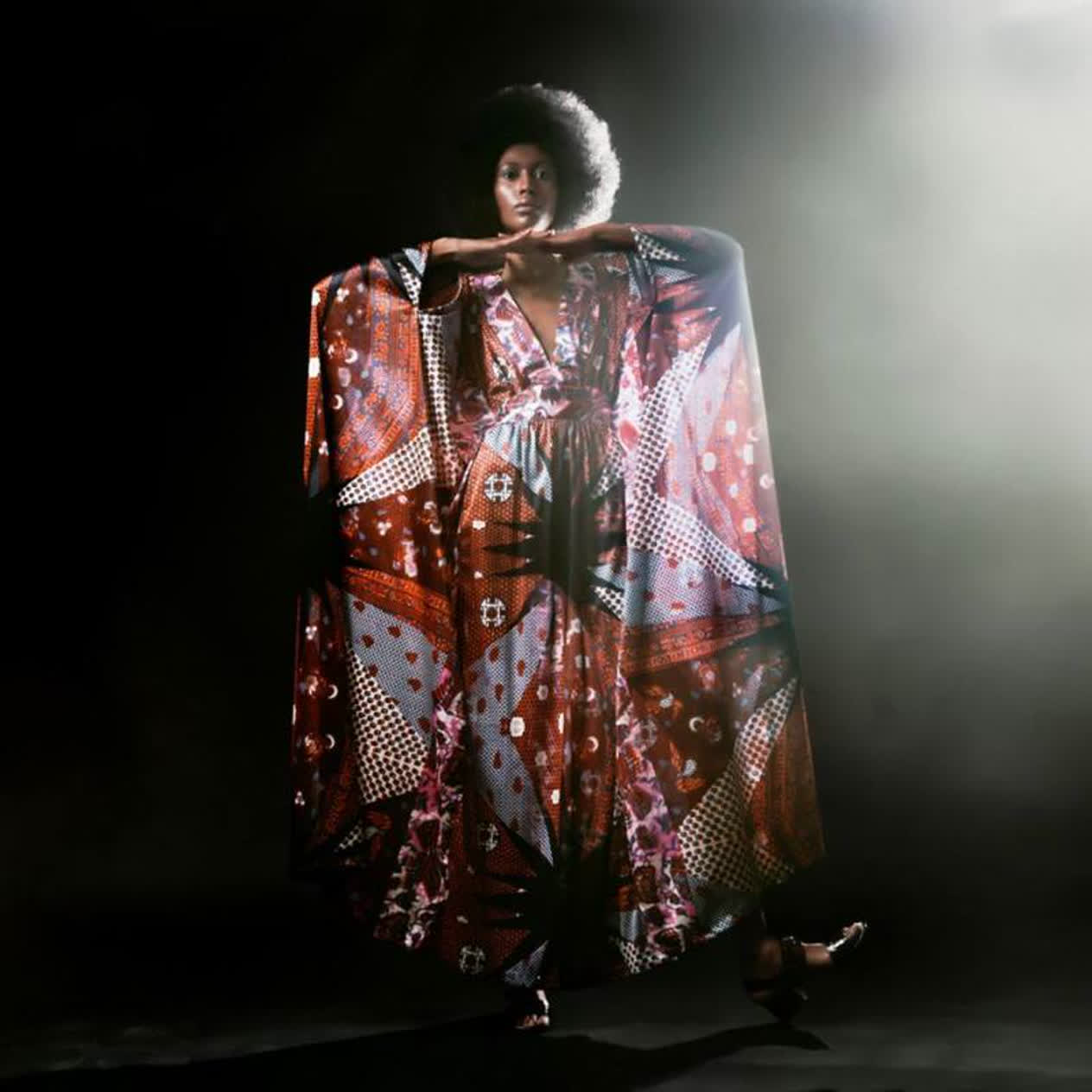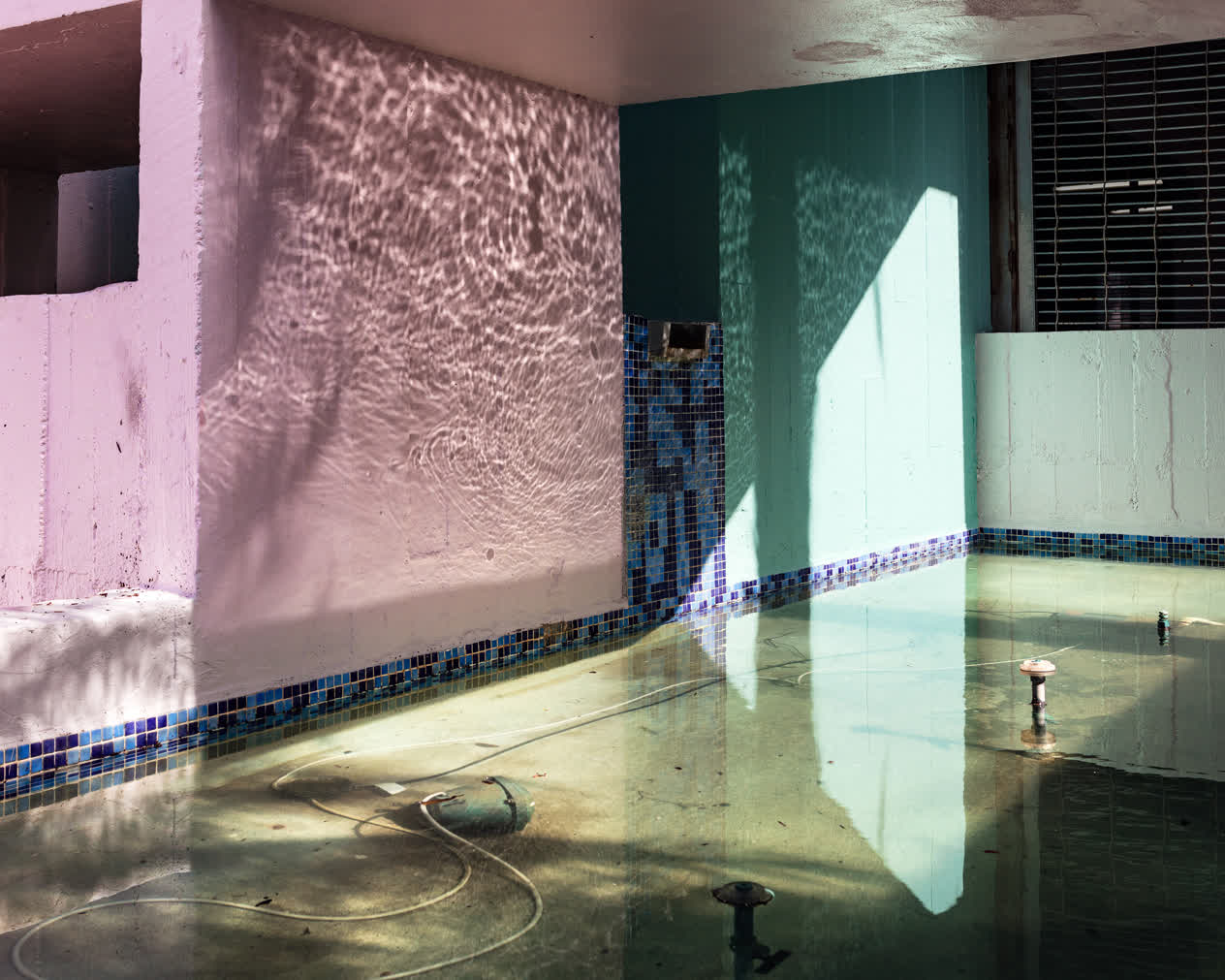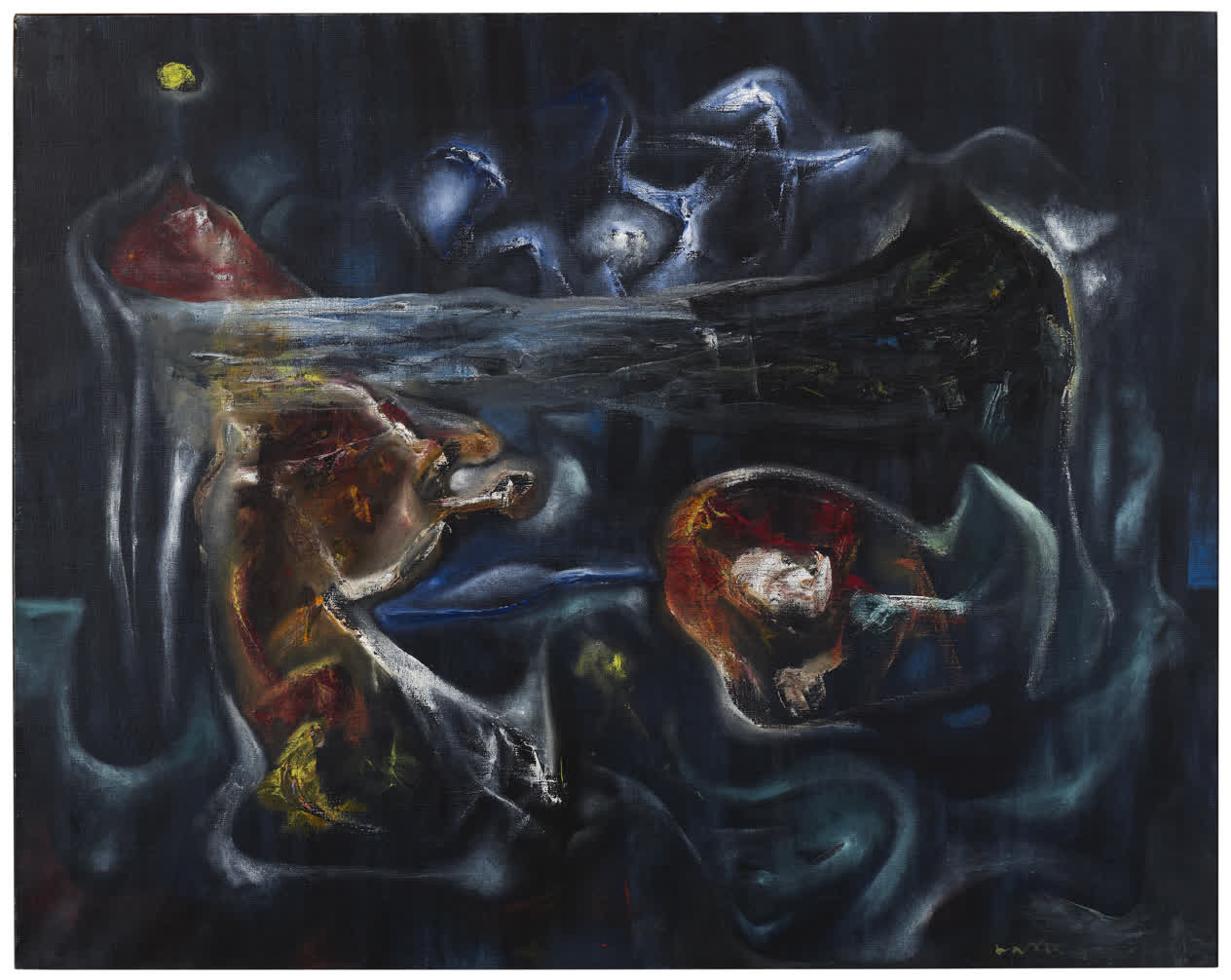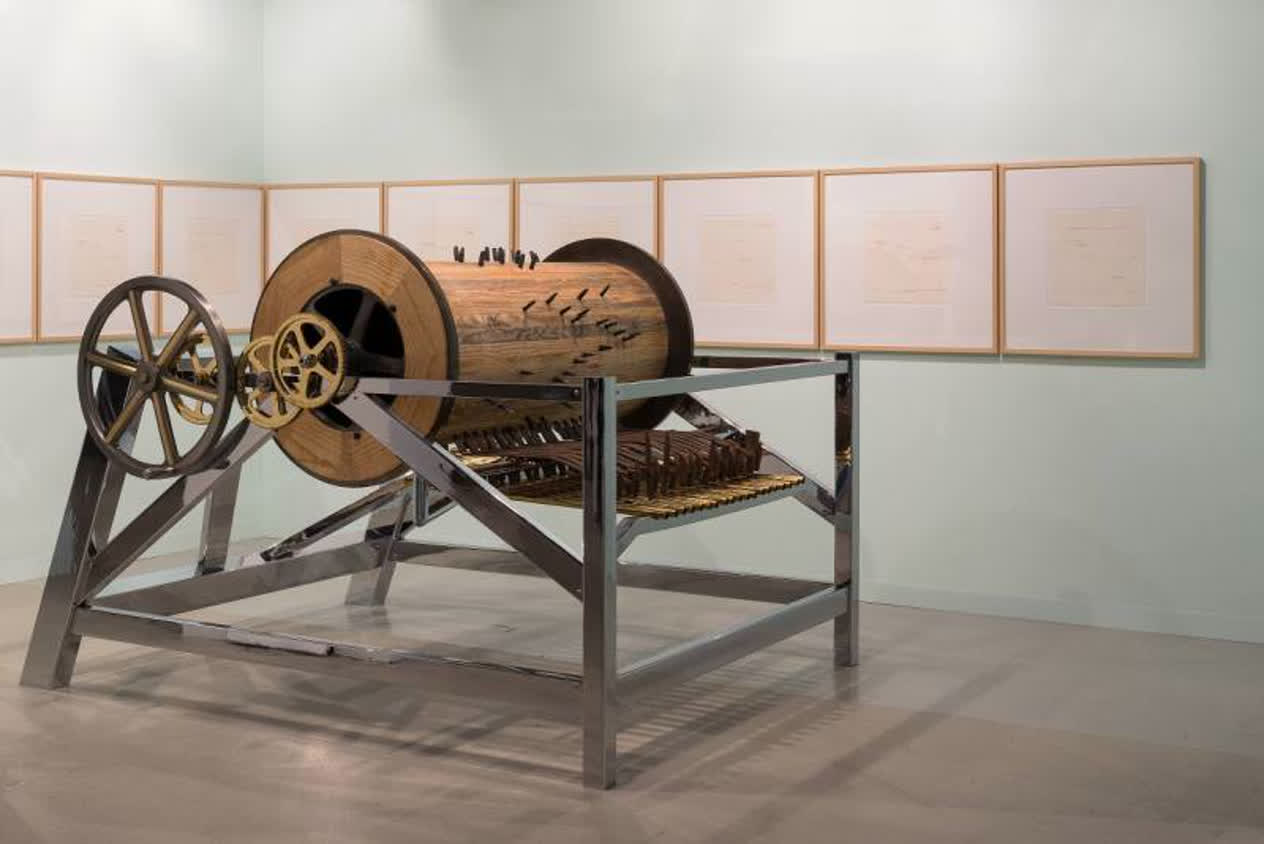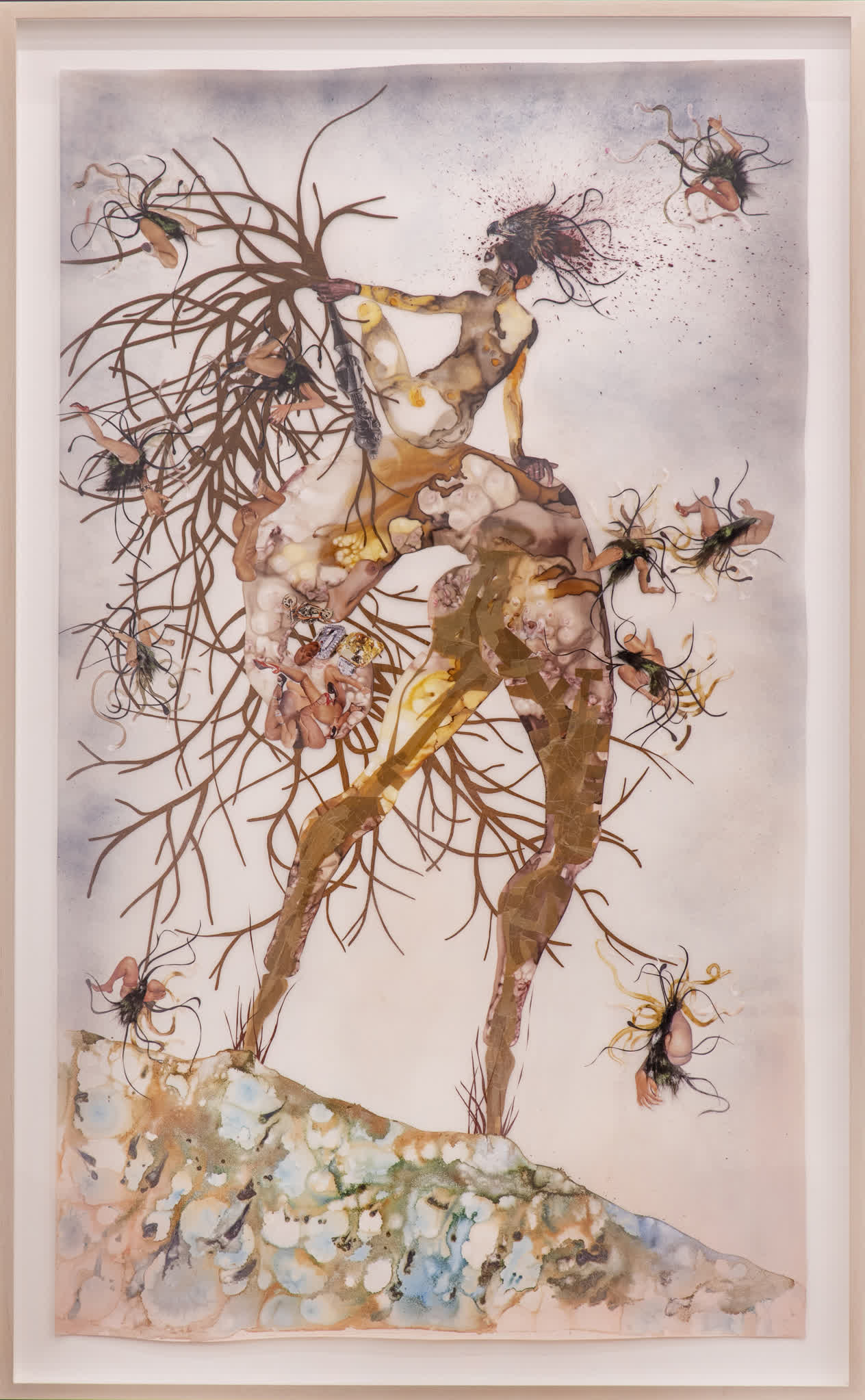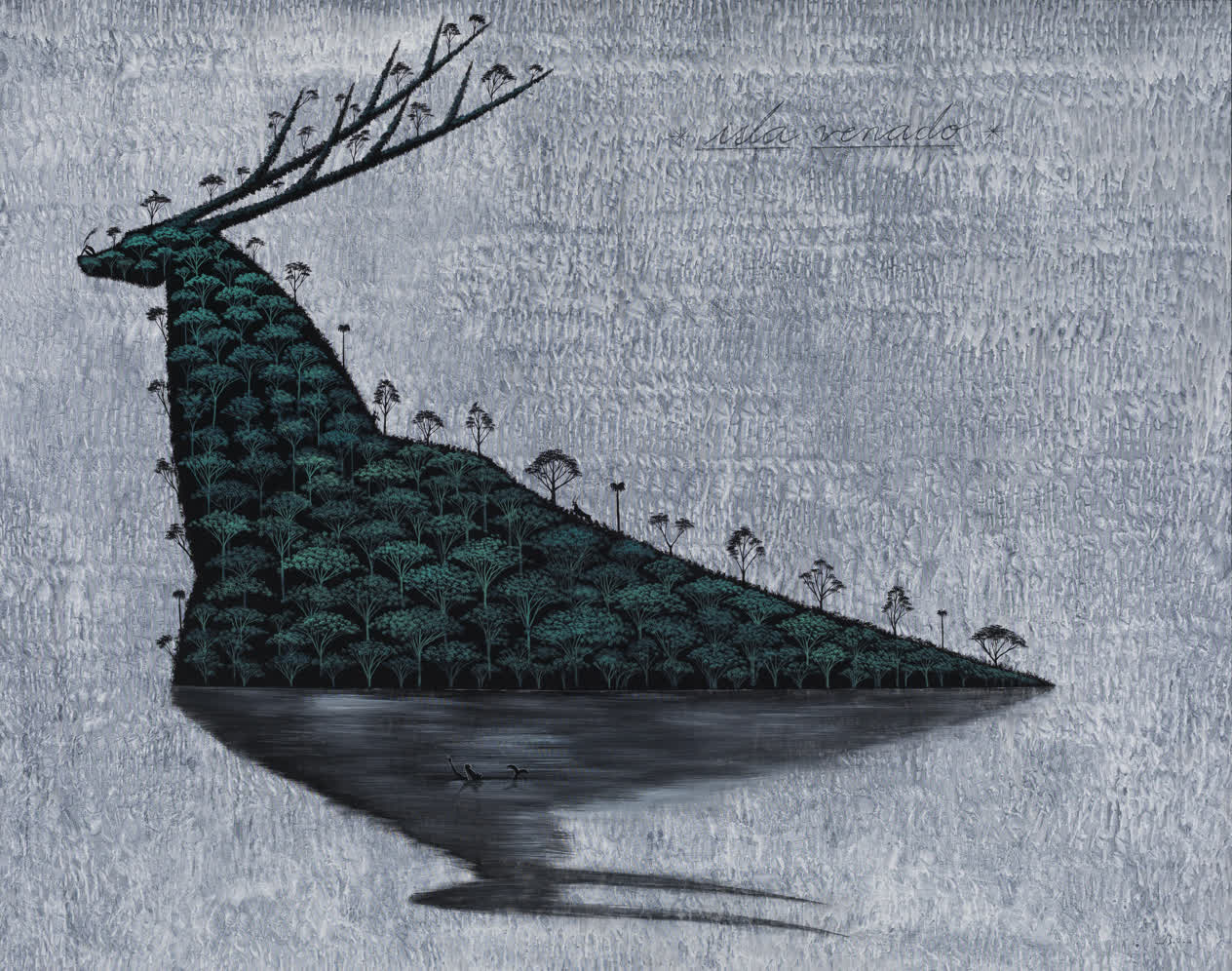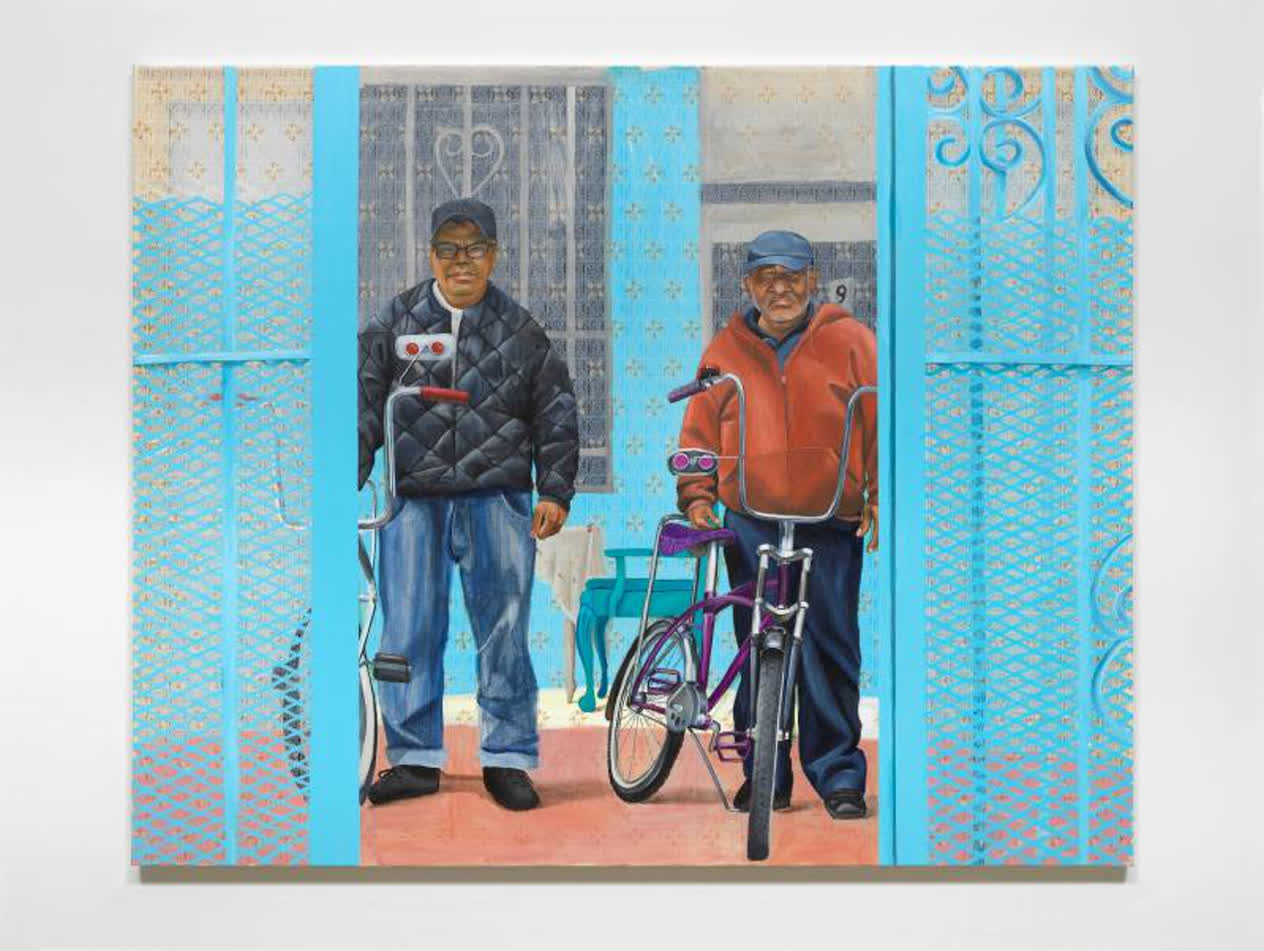José Bedia Mamá quiere menga, menga de su Nkombo 1988

© José Bedia

José Bedia is part of Cuba’s “Generation of the ‘80s,” a group of young artists who incorporated Cuban vernacular and spiritual references into their work and experimented with eclectic visual forms. Executed in his distinctly graphic style, this painting was produced by Bedia five years after he was initiated into Palo Monte, an Afro-Cuban religion. Bedia makes reference to Palo Monte through two symbols: the crosses marked on the central figure’s chest and the sacred pot he holds called a nganga, received by initiates and to which symbolic materials and objects are added throughout a practitioner’s life. The title of the piece alludes to the sacrificial blood used to fill this vessel during the initiation ceremony. The binary structure of the painting has been described by the artist as representing a man positioned between two worlds: the contemporary material realm and the ancient spiritual world. This work and its oversized central figure can be understood as a self-portrait of the artist and based on his own religious experiences.
Identification
Title
Mamá quiere menga, menga de su Nkombo
Production Date
1988
Object Number
2013.75
Credit Line
Collection Pérez Art Museum Miami, gift of Diane and Robert Moss
Copyright
© José Bedia
https://www.pamm.org/en/artwork/2013.75
Copy artwork link
Physical Qualities
Medium
Acrylic on canvas
Dimensions
55 x 78 3/4 inches
Visual Description
Mamá quiere menga, menga de su Nkombo, by Jose Bedia, is an acrylic painting on canvas made in 1988. It measures fifty-five by a little over seventy-nine inches, which is roughly equal to around four and a half feet tall by six and a half feet wide. This painting is displayed in landscape orientation, meaning that its longest side is parallel to the floor. This mostly symmetrical painting contains a figurative image of a forward-facing red torso, cropped at the neck and elbows.
Starting on the left, the background to the left of the torso is black like a night sky, and features several small white dots indicating twinkling stars. In contrast, the background on the right side of the painting is gray, and is covered with black arches that indicate birds flying seen from a distance. Underneath the armpits, in the triangular space between the torso and the arms are smaller painted images. On the left is the white outline of a car with yellow headlights seen from above. The black background serves as a road with yellow traffic stripes painted down the middle. On the right side of the painting, a figure painted in a black outline is walking up towards the top point of the triangular space under the right armpit, with footprints underneath and behind the climbing figure. Along the bottom width of the entire painting, along a strip no more than three inches tall, features the title text Mamá quiere menga, menga de su Nkombo. The cursive text sits in a black field, outlined a golden glow that emanates from behind the curved letterforms.
Overall, the upper torso that dominates the painting is outlined in thick black strokes. It is composed of bright red paint with a fleshy undertone, almost as if one were viewing the figure’s muscles under their skin. Starting with the left shoulder, on it are three red parallel vertical lines that appear like incisions. The left arm is divided by a black line that starts thick at the bottom edge above the title text, and thins out as it climbs upward between the left arm’s biceps and triceps. As the black line reaches the shoulder, it widens out again, fanning out at the top, like a fishtail. Moving right across the torso, there are five black concave curves, indicating ribs under the left pectoral. The left and right pectoral each have a red cross in their centers. Above each pectoral muscle are two black horizontal line segments, slightly inclined toward the center line of the painting, marking the collar bone. Above the collar bone is a red-orange area of flesh connecting the collar bone to the neck. The top edge of the painting cuts off the head at the neck. Continuing right, the right ribcage and right arm mirror the composition on the left, with the five ribs underneath the pectoral, and the left biceps and triceps divided by a black line. In the center line of the painting, about two thirds down the distance from the neck, the figure holds a small gray cauldron, outlined in black. The figure holds this cauldron with both hands, propping it up on their fingertips.






